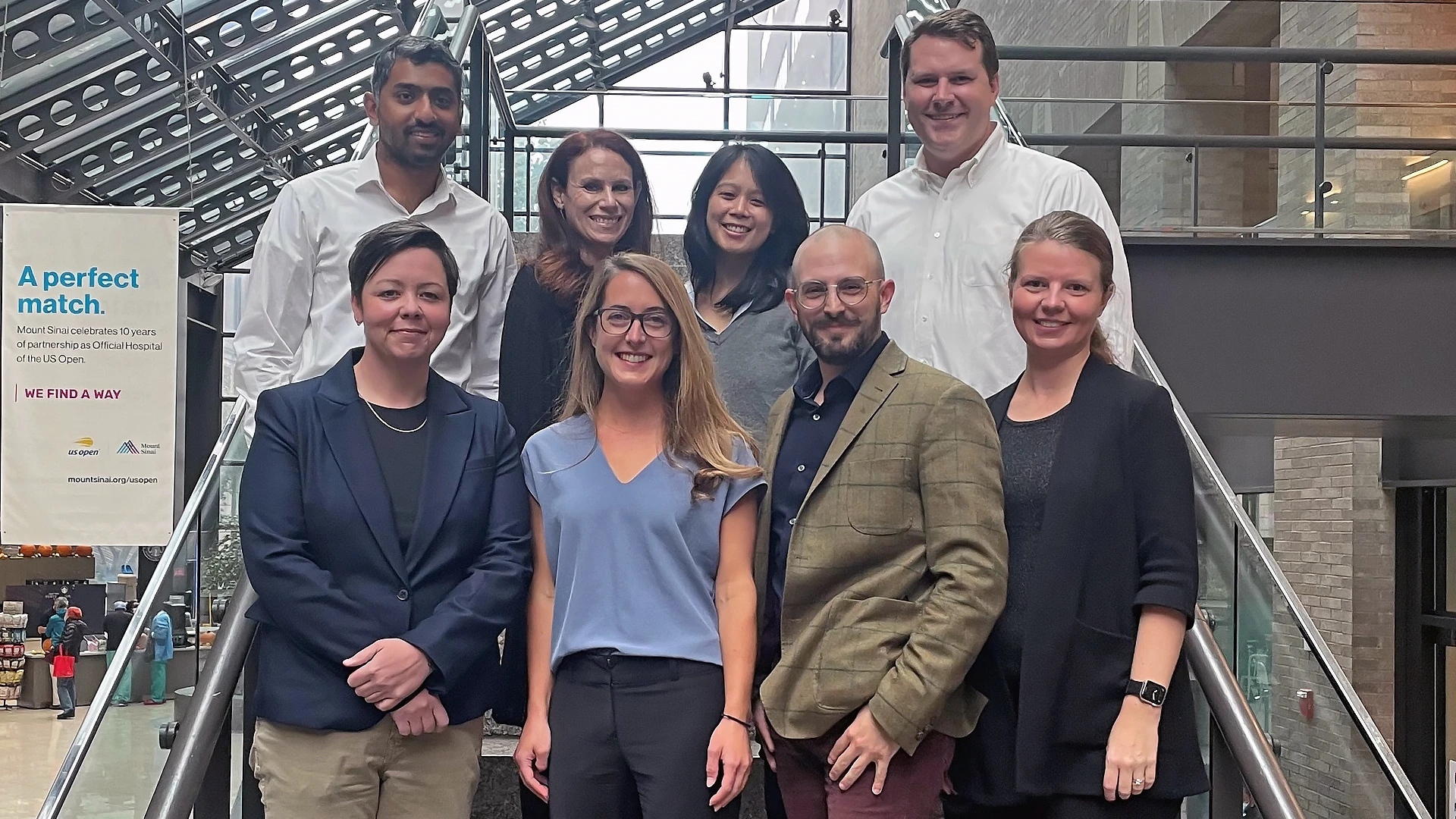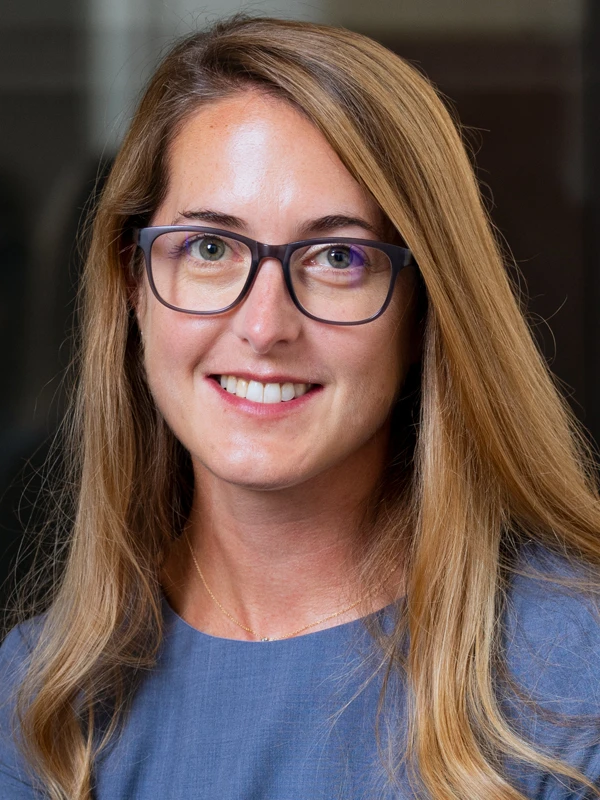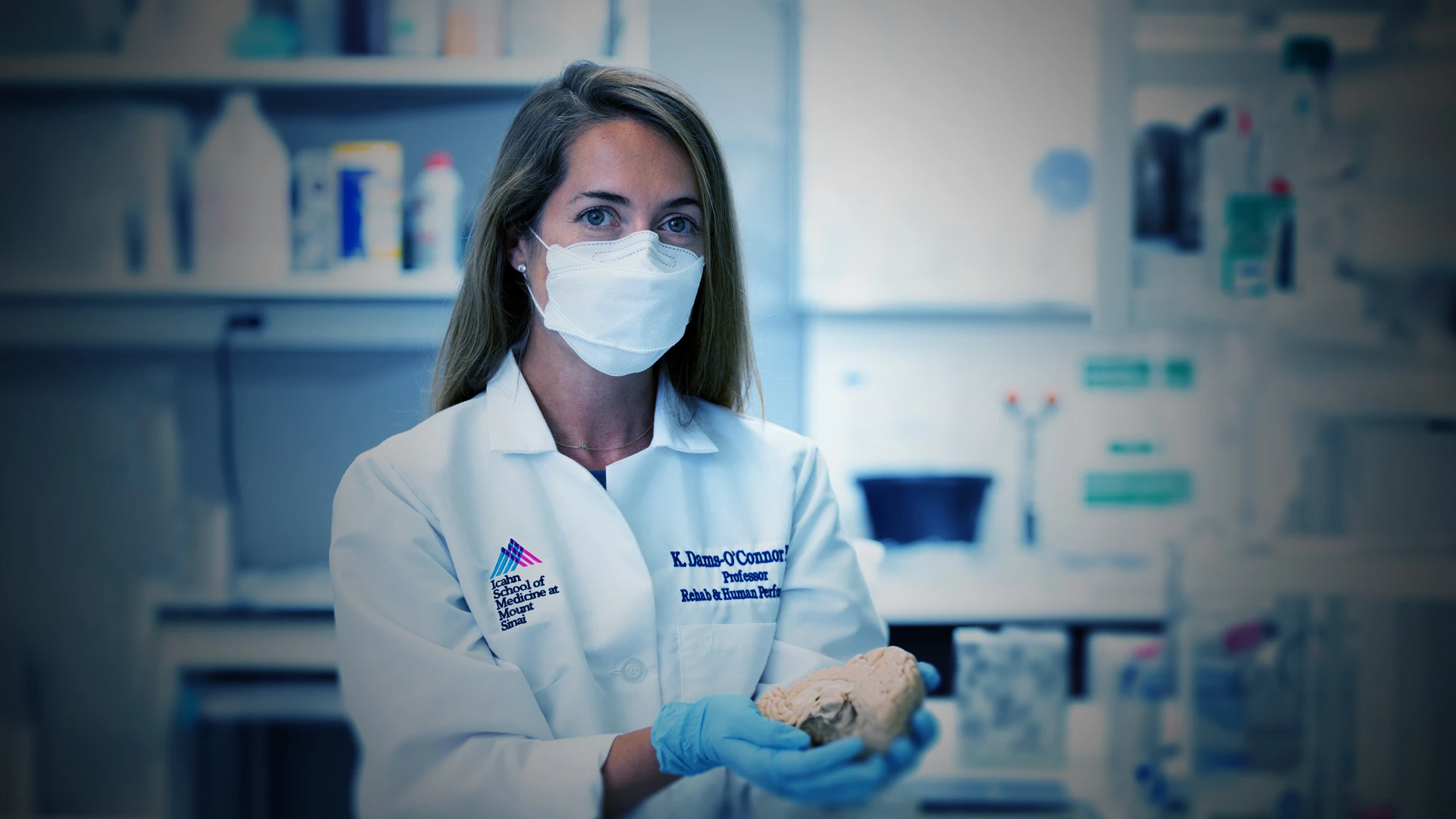In her role as Director of the Brain Injury Research Center of Mount Sinai, Kristen Dams-O'Connor, PhD, continually asks the question, “So what?
“In our meetings we let our creativity fly and we come up with all kinds of ideas,” she says. With so many research questions to be asked, the team has to be selective with its approach: “What would happen if we answered that question? What would the answer to that question actually do to improve the lives of people living with brain injury?” says Dr. Dams-O’Connor. “And if we can’t answer that, then we focus our energies elsewhere.”
Since she took the helm in 2016, she has launched many projects to identify and diagnose post-traumatic neurodegeneration as early as possible and find ways to treat it, both behaviorally and with disease-modifying interventions.
The Center has received grants, mostly from federal sources including the National Institutes of Health (NIH); the Department of Defense; and the National Institute on Disability, Independent Living, and Rehabilitation Research (NIDILRR), an agency within the U.S. Department of Health and Human Services.
Here are a few of the projects she oversees:
Late Effects of Traumatic Brain Injury Study
Funded by the NIH, this prospective traumatic brain injury (TBI) brain donor program is unique in that individuals with TBI are enrolled while they’re still alive so they can undergo extensive multimodal clinical assessment and followed to autopsy. Dr. Dams-O’Connor wrote the grant proposal in 2012, around the time when concerns were raised in the media about brain injuries causing chronic traumatic encephalopathy in professional athletes, especially male football players.
“Of course, people living with a single brain injury vastly outnumber elite football players. I thought it was important to learn what these findings mean for them,” she says.

Kristen Dams-O'Connor, PhD (right) with PhD candidate Enna Selmanovic examining a dissected brain donated as part of the LETBI research program.
Research in this field typically begins when a researcher receives the donated brain of someone who sustained brain trauma in life. However, the goal of LETBI is to identify clinical signatures of underlying pathology when someone is alive, so people can be diagnosed earlier — when there’s still time to treat it.
Subjects are enrolled at least a year after their injuries, to allow for a period of recovery. Assessments, done every two to three years, include cognitive and behavioral testing, symptom questionnaires, multimodal neuroimaging, and blood draws for genomics, proteomics, and blood biomarker analysis. “We want to characterize the clinical phenotype of post-recovery decline, because that’s really the key to being able to diagnose post-traumatic neurodegeneration during life,” Dr. Dams-O’Connor says.
After a participant’s death, their brain undergoes high-resolution neuroimaging to detect lesions that would be hidden in standard neuropathology. The tissue is carefully sectioned, taking a page from Alzheimer’s disease research. “In Alzheimer’s, we know where to look in the brain. TBI is very heterogeneous, so we don’t,” she says. The study’s image-guided tissue sectioning protocol allows a look in three dimensions, and thus examination of more brain regions.
If a lesion is found postmortem, the team can look back at the magnetic resonance imaging scans performed during life, voxel-to-voxel. Should the team identify findings of potential significance to neurodegeneration, they could do lookbacks at whether those factors could have been detected during life, and evaluate their importance for clinical function.
More than 300 subjects are enrolled in LETBI so far, and there will be more soon. In 2019, NIH granted more than $8 million to transform LETBI into a longitudinal study at Mount Sinai, Massachusetts General Hospital in Boston, and the University of Washington in Seattle. The study attracted another $5 million in late 2022 to include four more specialized brain injury centers: Spaulding Hospital in Boston, New York University, Indiana University, and Kessler Rehabilitation Hospital in New Jersey.
The 2019 funding also expands recruitment to a more diverse population than those who typically seek care at those centers. “We realized how important it is to recruit from the community,” says Dr. Dams-O’Connor. “People who come to specialized TBI care centers such as ours may be different from people who do not have access to care, or who are living in homeless shelters, domestic violence shelters, and substance abuse treatment centers.”
To that end, the Center has partnered with Mount Sinai’s Sexual Assault and Violence Intervention Program and with the Mount Sinai Opioid Treatment Centers to conduct TBI screening and potentially enroll patients. A Brain Injury Screening Questionnaire, developed at Mount Sinai and refined under Dr. Dams-O’Connor’s leadership, helps assess the quantity and severity of brain injuries a person has sustained from various insults, including accidents and assaults. A special version has been developed in partnership with survivors to screen for head trauma among individuals who have experienced intimate partner violence.
TBI Model Systems of Care
Mount Sinai, as one of the first partners of the TBI Model Systems of Care— an NIDILRR-funded program established in 1987 that comprises 16 centers nationwide — has helped develop crucial follow-up infrastructure since the network’s inception. Through the Model Systems of Care, Dr. Dams-O’Connor has been pushing forward the understanding among clinicians, policymakers, and insurers that TBI is a chronic disease that needs to be treated as such.

Brain Injury Research Center team members, clockwise from top left: Raj G Kumar, PhD, MPH; Lisa Spielman, PhD; Belinda Yew, PhD; Casey LaDuke, PhD; Maria Kajankova, PhD; Eric Watson, PhD; Kristen Dams-O'Connor, PhD; Carrie Esopenko, PhD.
Her team is leading at least a dozen studies using TBI Model System data toward that goal and to optimize outcomes for all survivors. For example, most health insurance companies treat TBI like a broken arm where the injury happens, patients heal, and they move on, she says: “Often insurers don’t cover outpatient rehabilitation or specialty care beyond a few months.” The national database helped her substantiate the fact that, for a lot of people, TBI is just the start of a lifelong multisystem disease process that can affect everything from mood and sleep to endocrine and even cardiovascular function.
Dr. Dams-O’Connor’s team has also learned from the Model Systems that there’s a subset of people who continue to improve for years after injury. That’s a message that often gets lost, she notes.
“We don’t just want to know the gloom and doom and what predicts decline. We also want to know what’s unique about the people who continue to improve for years or who seem to recover completely.”
Kristen Dams-O'Connor, PhD
ENRICH Brain Health
The Leveraging Nationwide Research Infrastructure to Enrich Brain Health after TBI study, or ENRICH Brain Health for short, is a multicenter study, funded by an $8 million Focused Program Award from the Department of Defense. Its goal is to understand and improve long-term cognitive and psychological health after TBI and involves five projects.
Establishing a “community-based” advisory group, which now includes about 20 individuals living with brain injury, caregivers, advocates, and policymakers from community-based partnerships. They help ensure that the research conducted across the ENRICH projects stays true to the priorities of people living with brain injury.
Long-term Trajectories of Cognitive and Psychological Health: Informing Personalized Interventions: A study using the TBI Model Systems of Care infrastructure to recontact participants who are at least five years post-injury and from 18 civilian and veteran centers in the network, to investigate factors associated with changes in cognitive function, and suicidal thoughts and behaviors over time.
Clinical and Biological Signatures of Post-Traumatic Neurodegeneration in Military Service Members: This dovetails with the LETBI study to include a cohort of military veterans to study the late effects of single and repetitive head trauma that may be unique to this population. This will be the first LETBI partnership with community and veterans organizations for community-based—as opposed to clinic-based—recruitment of veterans, filling a critical gap in current research samples.
Neuroinflammatory and Structural Signatures of TBI: This project leverages brain tissue collected through the LETBI study and ongoing partnerships with medical examiners to elucidate pathological signatures of post-TBI cognitive and psychiatric decline.
Advanced In-Vivo and Ex-Vivo Neuroimaging of Post-TBI Behavioral Dysregulation: The goal is to understand the network-based structural and functional alterations underlying neurobehavioral health deterioration following TBI to develop tools for diagnosis and treatment during the patient's life.
The scope of work in the ENRICH Brain Health study is made possible by building upon existing research infrastructure and longstanding collaborative partnerships. This leveraging of resources from one funded study to another takes place throughout all of the research that Dr. Dams-O’Connor leads.
“We use our federal funding to do as much as we possibly can,” she says. “If you can build upon infrastructure that has been established with prior funding, you can advance science much more quickly.”
Featured

Kristen Dams-O'Connor, PhD
Director of the Brain Injury Research Center
